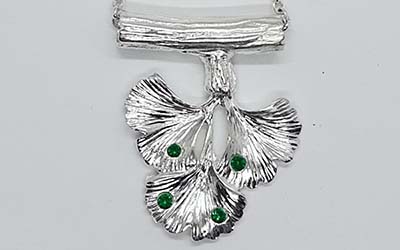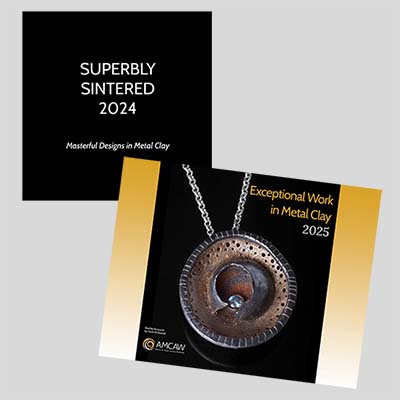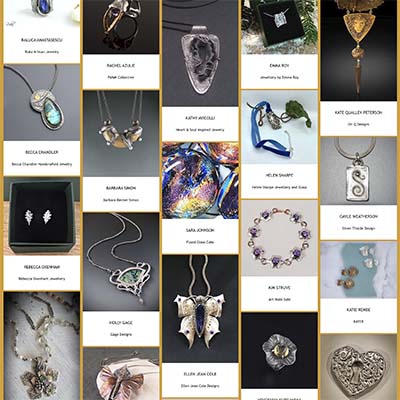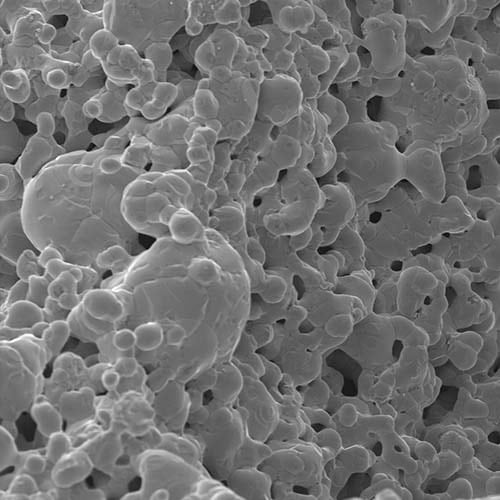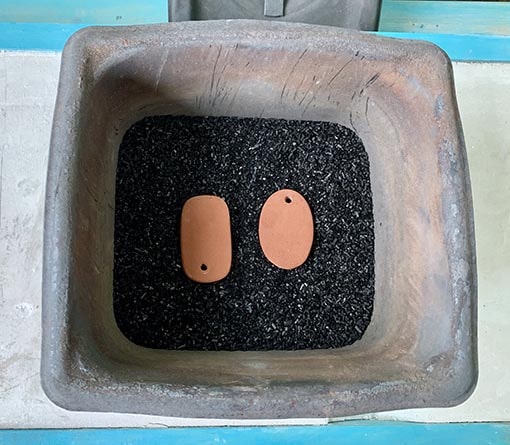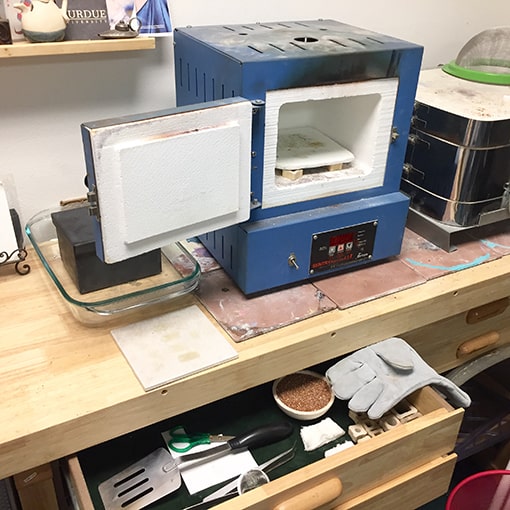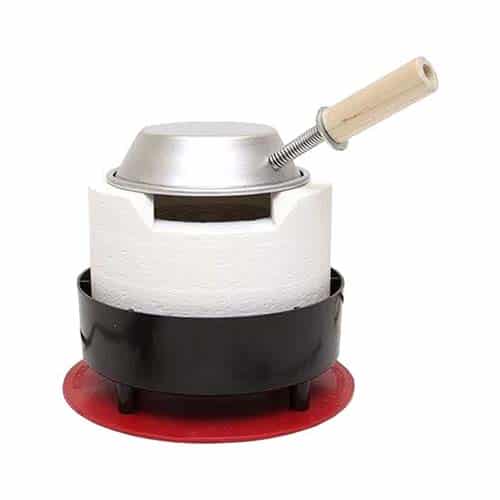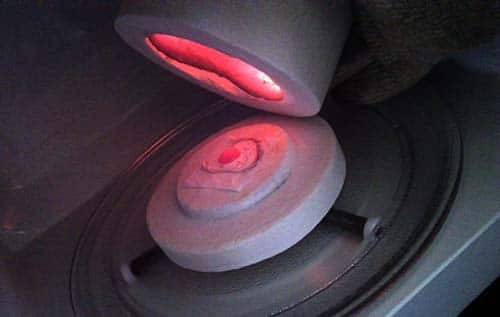Microwave Kiln Firing
A specialized kiln chamber that was originally designed to fit inside a conventional microwave oven to allow a maker to fuse glass can also be used to sinter metal clay. These kilns are made of bio-soluble fiber, which is very light and non-hazardous. The lid of the chamber has a special coating on the inside that makes it possible to reach the high temperatures needed to fuse glass and sinter metal clay.
The lowest temperature used for sintering fine silver clay is 1200ºF/650ºC (although it can go as high as 1650ºF/899ºC) – however microwave ovens do not have the option to set the temperature, one can only monitor wattage and time. Therefore, the most important thing to do when using a microwave kiln is to determine the best schedule for a full sintering and not exceed these figures since silver clay will melt if fired at too high a temperature. Each microwave heats differently so it will be important to do a series of test firings to determine the best process for your microwave and metal clay work.
As when firing with a torch, you’ll be limited to small amounts of low-fire, fine silver metal clay, but there is the added advantage of not having to watch it for the entire firing process. Microwave kilns can be used for firing small charms, earring components, and pendants, and are a good option for beginners who may not feel comfortable using a torch but want to get started with metal clay without having to buy a more expensive kiln.
It’s important to carefully read your microwave oven safety manual to make sure this complies with the manufacturer’s recommendations. Please note that the kiln chamber must be removed from the microwave oven as soon as the oven turns off. Caution: without the oven’s fan removing hot air, the hot air emitted from your kiln chamber will damage the interior of your microwave oven and could create a fire.
Extra Accessories Needed: Microwave oven
Pros: Inexpensive, can be used in conjunction with a home microwave oven. No need to be in close proximity as the kiln operates.
Cons: The jury’s still out on this one. It’s more popular in Europe but is gaining admirers in the US and around the world. May create a fire hazard if not removed immediately after firing. Not used for firing sterling or base metal clays.


